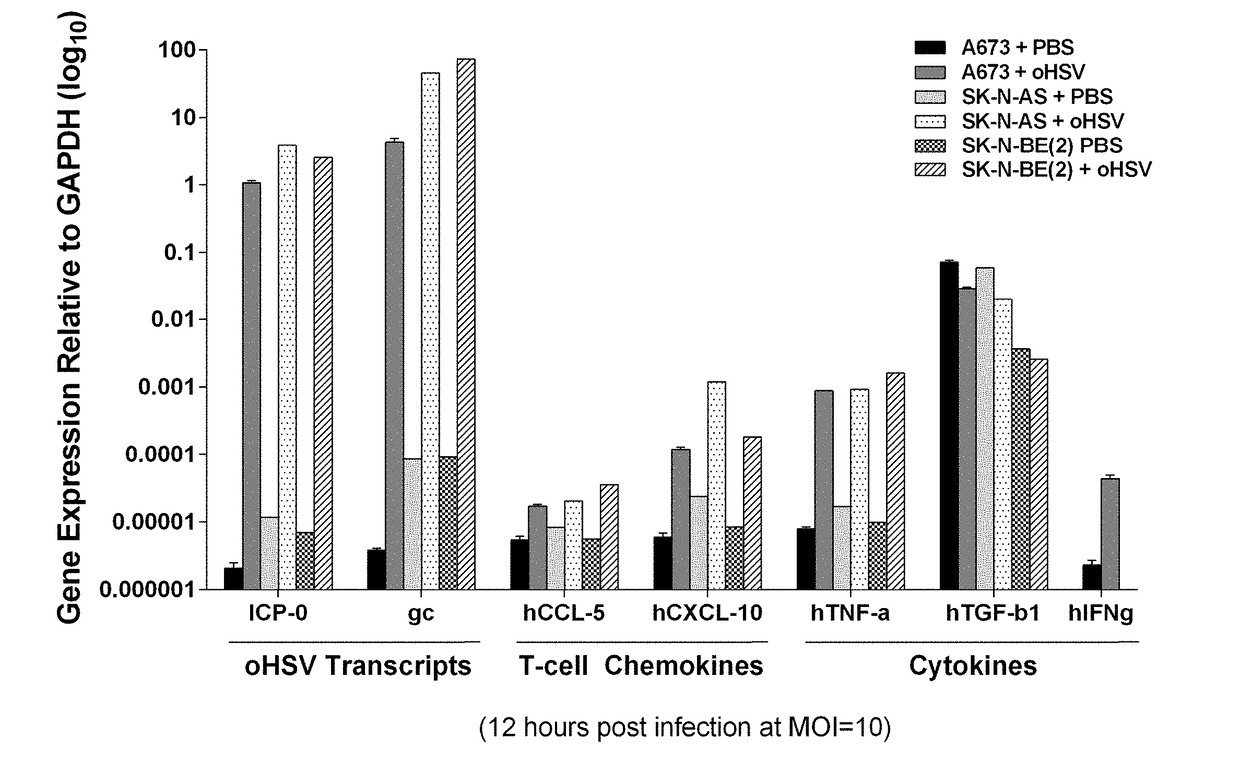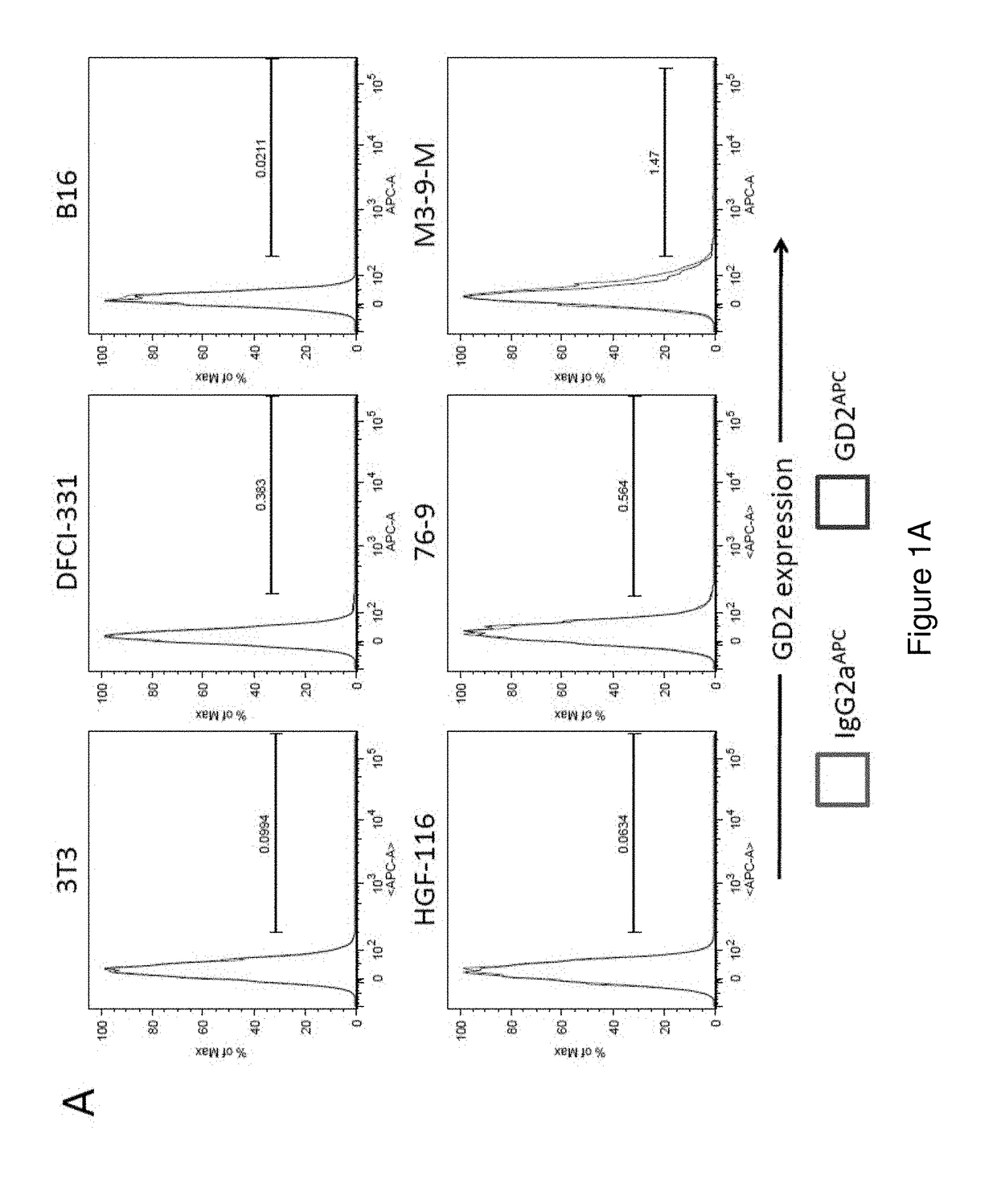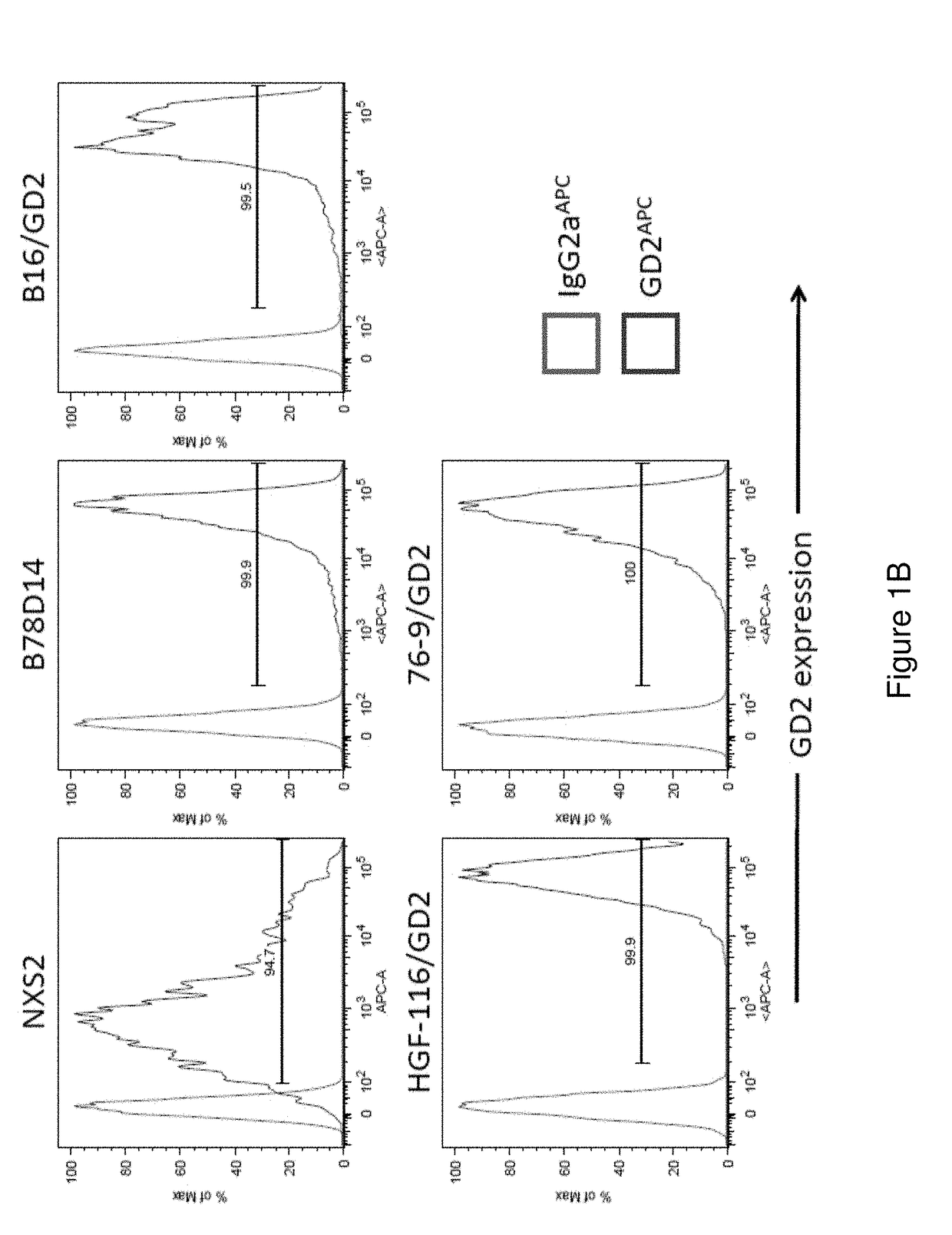Treatment of cancer
a cancer and cancer technology, applied in the field of cancer treatment, can solve the problems of limited clinical efficacy of car-t cells in solid state, and achieve the effects of rapid generation of tumor-targeted t cells, enhanced t cell potency, and specificity and safety
- Summary
- Abstract
- Description
- Claims
- Application Information
AI Technical Summary
Benefits of technology
Problems solved by technology
Method used
Image
Examples
example 1
n of Attenuated HSV1716 in Combination with Chimeric Antigen Receptor T Cells for Solid Tumors
[0215]Neuroblastoma, osteosarcoma, and rhabdomyosarcoma are among the most prevalent childhood solid tumors. Each of these tumor types as well as melanomas exhibit increased levels of the tumor associated carbohydrate, GD2 on their cell surface making them ideal targets for chimeric antigen receptor (CAR) T cell-directed therapies. Despite the ability of GD2 CAR T Cells to target GD2-expressing tumor cells in vitro, there is great interest in improving tumor clearance in vivo, especially for solid tumors where current outcomes remain poor. We hypothesize that the immunosuppressive milieu present within the solid tumor microenvironment serves as a major factor limiting the effectiveness of GD2 CAR T cells and propose that administration of oncolytic viruses could induce inflammation within the tumor microenvironment that may enhance, rather than inhibit, the effectiveness of immune based the...
example 2
Virotherapy-Enhanced Chimeric Antigen Receptor T-Cell Therapy in Pediatric Solid Tumors
[0218]While chimeric antigen receptor (CAR) T-cell therapies have shown remarkable anticancer efficacy in patients with relapsed and refractory lymphoid leukemias, their effectiveness in patients with solid tumors has thus far been disappointing. Trials of treatment in solid tumors have shown little clinical success, with modest homing to tumors and lack of CAR persistence. These findings may be attributed to the immunosuppressive microenvironment characteristic of solid tumors. Oncolytic virotherapy is a promising platform which may potentiate the competence of CAR T-cells within solid tumors. Oncolytic viruses specifically amplify in malignant tissues and cause tumor-specific cell death not only through direct cell lysis, but also through the induction of an immunologic response. This mechanism suggests that oncolytic virotherapy may be a useful strategy to reverse the immune-escape tactics of s...
example 3
Virotherapy Enhances GD2-Directed Chimeric Antigen Receptor (CAR) T-Cell Therapy in GD2-Expressing Pediatric Solid Tumor Xenograft Models
[0235]High Risk Neuroblastoma (NBL) is the most common non-CNS pediatric solid tumor, requires multimodal and targeted therapy, is responsible for ˜15% total childhood cancer deaths and has <10% survival for ˜50% of children who relapse
[0236]Ewing Sarcoma (EWS) is among most prevalent solid tumor afflicting older children and adolescents, ˜30% are refractory to conventional therapy, there is ˜30% survival for patients with metastases.
[0237]GD2 is a disialoganglioside expressed on NBL and EWS, and is a strategic immunotherapeutic target.
[0238]Chimeric Antigen Receptor (CAR) T-Cells are engineered T-cells targeted against tumor antigen, have remarkable efficacy in relapsed / refractory lymphoid leukemias. CAR T cells have so far shown little clinical success against solid tumors, modest migration to tumor, lack of activation, proliferation, and persist...
PUM
| Property | Measurement | Unit |
|---|---|---|
| Cytotoxicity | aaaaa | aaaaa |
Abstract
Description
Claims
Application Information
 Login to View More
Login to View More - R&D
- Intellectual Property
- Life Sciences
- Materials
- Tech Scout
- Unparalleled Data Quality
- Higher Quality Content
- 60% Fewer Hallucinations
Browse by: Latest US Patents, China's latest patents, Technical Efficacy Thesaurus, Application Domain, Technology Topic, Popular Technical Reports.
© 2025 PatSnap. All rights reserved.Legal|Privacy policy|Modern Slavery Act Transparency Statement|Sitemap|About US| Contact US: help@patsnap.com



